Have you recently come across the term moral fortitude and been wondering what it means? If so, then go no further – this article is for you.
What You’ll Learn
This article will cover the following:
-
Definition of moral fortitude
-
Relationship of moral fortitude to other virtues
-
Illustrative examples of moral fortitude from a great movie
After reading this article, you’ll be an expert with ample knowledge of moral fortitude. With a better understanding, perhaps you can exercise fortitude more easily in your own life. And, lastly, you’ll have a good recommendation for what movie to watch tonight or this weekend.
Definition of Moral Fortitude
So what is moral fortitude? Simply put, moral fortitude–also called fortitude–is defined as the moral strength and moral courage to persevere and do the right thing despite adversity.
Fittingly, according to Merriam Webster, the word fortitude comes from the Latin word fortis which means strong. Fortitude is synonymous with moral fortitude, moral courage, determination, and other similar words.
But there’s more depth to explore and understand about moral fortitude – let’s unpack this subject a bit more.
Relationship to Other Virtues
Fortitude is one of the four cardinal virtues, which are the basis of moral principles and all good morality. In fact, the four cardinal virtues are at the core of an entire branch of philosophy call ethics, which deals with the idea of morality.
Fortitude is the third cardinal virtue because it serves the first two cardinal virtues: prudence, the first cardinal virtue, and justice, the second cardinal virtue. Prudence identifies the right path to achieve good, and justice is the will to act out that path to goodness and protect the rights of others.
In pursuing moral goodness, we are sure to meet external resistance and adversity. Fortitude, then, is the moral courage that allows us to confront and overcome this external adversity in order to complete the morally good act, as dictated by the virtues of prudence and justice.

Why this distinction of external adversity? This distinction separates fortitude from temperance, the fourth cardinal virtue. While these two virtues–fortitude and temperance–both help us overcome adversity to achieve the morally good act, these virtues are distinct in which kinds of adversity they help us address.
There are two kinds of adversity: external and internal. External adversity stems from entities outside of ourselves, while internal adversity stems from – you guessed it – inside ourselves.
External adversity can be physical (being beat up or even killed), psychological (being shunned, made fun of, mocked, humiliated), or even financial (getting fired, losing money), etc. Fortitude gives us the moral courage to confront and overcome these external adversities to do the right thing.
Internal adversity is often in the form of disordered desires or temptation. For instance, lust, greed, and gluttony are all disordered passions that can challenge our desire to do moral good in our lives. Temperance gives us the moral strength to resist these internal temptations in our pursuit of moral goodness.
Fortitude vs Brashness
The virtue of fortitude is always guided by the higher cardinal virtues of prudence and justice, serving the higher purpose of achieving moral goodness.
As such, there is an essential distinction between fortitude and brashness. A brash person may seek and conquer danger for his own sake, with the desire to simply garner the respect and praise of others.
On the contrary, however, while moral fortitude gives us the courage and power to overcome danger, moral fortitude necessarily cannot lead us to seek danger for selfish reasons. To do so would defy the guiding virtues of prudence and justice which are integral to the virtue of fortitude. In this way, fortitude is never selfish – a key distinction from brashness.
Showcasing Fortitude
What does the entertainment lore have to say about the cardinal virtue of fortitude? As they say, conflict drives plot, so any good story has a healthy dose of adversity that the main character must overcome as the plot proceeds. Throughout movies, cartoons, video games and TV shows, there are many good examples of characters that must practice fortitude and courage to persevere and resolve the conflicts in their midst.
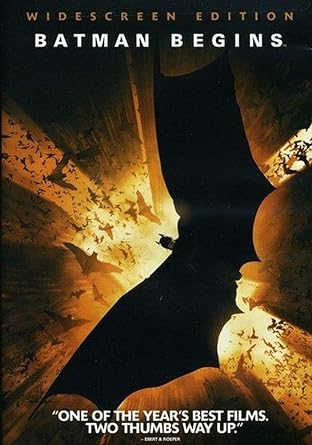
Enter the Batman
I’d like to take this opportunity to introduce you to none other than the Dark Knight – Batman himself. Oh you’ve heard of him? Good! Then you’ll certainly know that Batman is famous for his will power and strong sense of duty to pursue moral good.
In every rendition that I’ve seen, Batman is 100% committed to the mission at hand, determined and willing to sacrifice everything to save Gotham City or – in some cases – the world or even the multiverse.
With a veritable hoard of villains to contend with, Batman is challenged with all manner of external adversity in his mission to save others and do good. His great moral fortitude gives him the ability to endure challenge after challenge. This incredible fortitude is a core part of his nature as a character, allowing him to pursue good no matter what.
Indeed, despite all the pain and losses, he never loses sight of the mission. His will power is legendary! Could you imagine this guy with a ring from the Green Lantern Corp?!
But let’s get a little more specific. Warner Bros.’ Batman Begins is one my favorite renditions of Batman, and this film is one of my favorite movies in general. I highly recommend watching Batman Begins. I urge you to go watch it ASAP if you haven’t seen it yet, ’cause I’m gonna drop some spoilers here! Alright, you’ve been officially warned!
Acts of Fortitude
The virtue of fortitude is showcased throughout this film. True to Batman lore, we see as part of his origins that Bruce Wayne witnesses the brutal murder of both his parents, leaving him a tragic orphan. With great difficulty, Bruce must bear this great pain of the death of his parents at an early age, and his ability to endure this trauma through fortitude ultimately leads to his transformation into Batman.
In truth, most would capitulate in such circumstances, wallowing in self pity or worse. But instead, this great tragedy spurs Bruce’s conviction that Gotham needs to be saved from criminality so that no one else suffers the same tragic fate – or worse. To accomplish this task of protecting Gotham, Bruce will eventually realize that he must become a symbol, a legend – something that inspires the imagination and hope of Gotham for a better world. Thus the idea of the Batman was born.
In this way, one could make the argument that Bruce’s fortitude in bearing the tragedy his parents’ murder is the one reason that Batman came to be. Without fortitude, Batman would not exist.
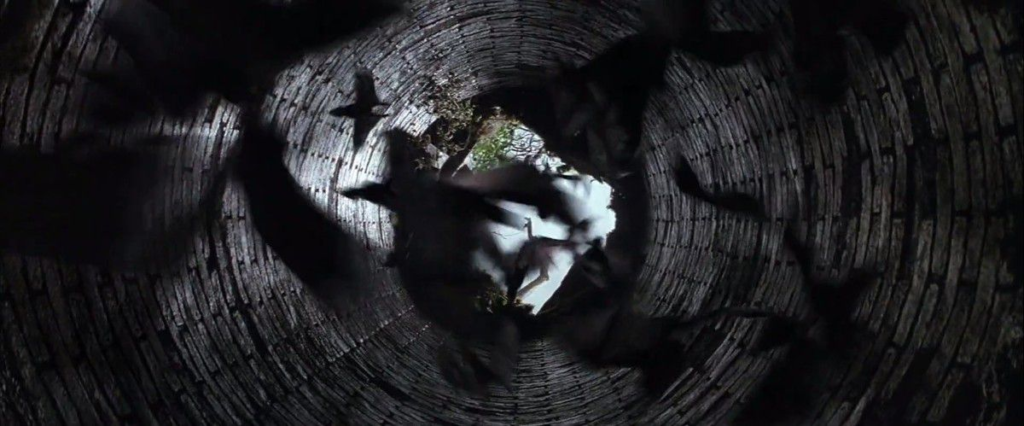
Fear is a constant and central theme in this film, present from the beginning to the end. Batman must practice fortitude to overcome his fears. Early on, we see that Bruce Wayne has an irrational fear of bats from a traumatic experience as a child.
As an adult, he eventually ends up in the mountains with the League of Shadows to train. Here, by exercising fortitude, he endures the bitter cold traveling to the top of the mountain, undergoes harsh training and learns to purge his fears and “turn fear upon those who prey on the fearful.”
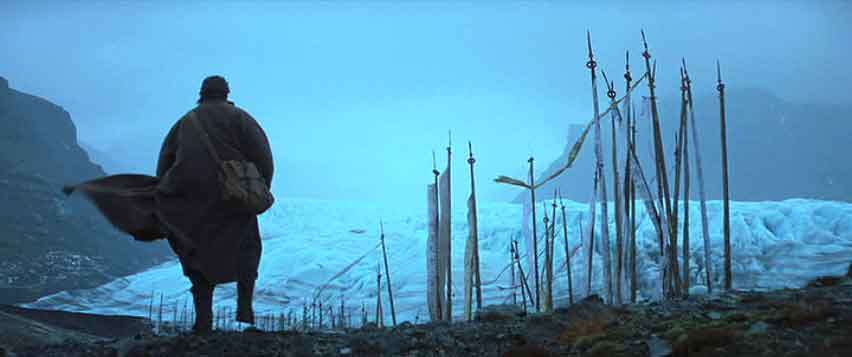
Later, after becoming Batman, Bruce must confront a psychotic psychiatrist known as John Crane (AKA the Scarecrow, as he christened himself), who works for Ra’s and uses a fear toxin to incapacitate his enemies.
Bruce must of course practice fortitude and moral courage to resist the crippling fear induced by Crane’s hallucinogen and continue his mission to protect the people of Gotham.
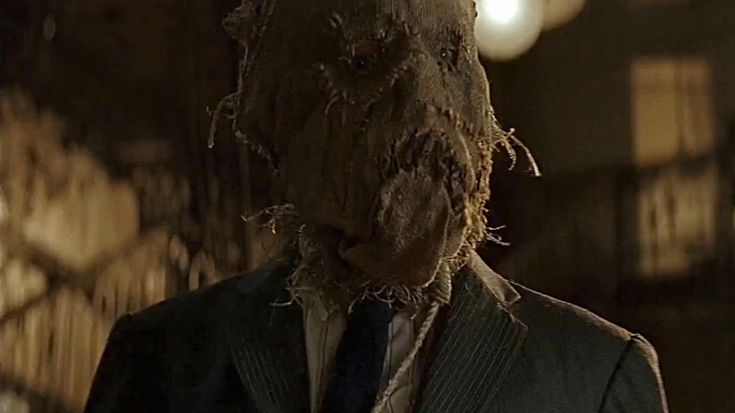
And so we see that Bruce exercises fortitude throughout his journey – when he was a child, when he was training, and when he first donned the cape and cowl. In this way, fortitude was instrumental to how Batman begins. See what I did there?
Now let’s look at a specific scene, towards the end of the film. Towards the end of course is the climax of the film, the point at which the conflict surges to a tipping point, and Batman must exercise fortitude in order to persevere and save the day, or rather the night! Now to set the scene.
Setting the Scene
Late in the film, Ra’s Al Ghul reveals his true identity and confronts Bruce at Wayne manor. Ra’s describes his plans to destroy the corrupt city of Gotham and start anew, trying to convince Bruce one last time to join the League of Shadows. Bruce refuses and chooses to defend Gotham City against Ra’s and his followers.
Ra’s men set the manor ablaze as retribution for Bruce destroying the League’s headquarters earlier on. A brief fight ensues, and Bruce is defeated and left pinned under a burning support beam.
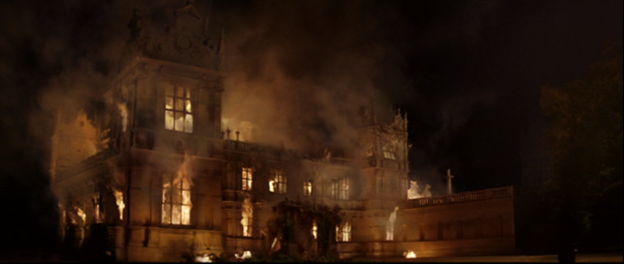
Alfred finds Bruce, helps him escape, and the two narrowly make it to the safety of the Batcave. With the burning manor collapsing above and reeling from his wounds, Bruce feels the weight of failure.
Bruce, gazing up at the destruction above: “What have I done, Alfred? Everything my family – my father built…”
Alfred, tending to Bruce’s wound: “The Wayne legacy is more than bricks and mortar, sir.”
Bruce: “I wanted to save Gotham. I failed.”
Alfred: “Why do we fall, sir? So that we can learn to pick ourselves up.”
Bruce: “You still haven’t given up on me.”
Alfred: “Never!”
With Alfred’s unfailing help, words of wisdom, and unwavering faith in Bruce as a person, Bruce was able to recompose himself both mentally and physically. With renewed hope and resolve, Batman practices moral fortitude once more and perseveres though adversity to save Gotham city from Ra’s.
Analyzing the Scene
In this scene, Bruce felt the literal and figurative crushing weight of failure in several ways (both physically and mentally). Wayne manor was being burnt to ashes. Bruce was bested in a fight, recovering from a concussion and significant wounds. And Ra’s was on his way to reduce all of Gotham to rubble – the very city Bruce swore to protect. This moment can be aptly described as “brutal defeat.”
Physical Defeat
Bruce nearly died in his encounter with Ra’s at Wayne manor. With Bruce at odds with his vision for Gotham, Ra’s decided that Bruce must be eliminated. After a brief skirmish, Ra’s defeats Bruce leaves him badly hurt, knocked unconscious, pinned under a heavy beam, and left for dead, helpless to burn alive in his own house.
Mental Defeat
Setting Wayne manor ablaze is mentally crushing. Loss of Wayne manor not only means material loss, but also several other forms of loss.
Think of what Wayne manor represents. This is the childhood home of Bruce – where he grew up, as we’re shown at beginning of the film. Bruce has many memories associated with this place. With his parents having been murdered, Wayne manor is probably one of the last places that harbors good memories of his parents.
Additionally, as Alfred mentions elsewhere in the film, Wayne manor has been the home of generations of Waynes. It is a multi-generational home filled with precious memories well beyond Bruce’s parents. For it to be burned down would feel like a heavy loss of a place of fond memories—almost like like losing his parents again or a death of his childhood memories.
Financial loss would be part of it, but that’s not really a concern for a billionaire like Bruce Wayne. Also the sudden loss of your home and nearly all of your belongings —the one place you can lay your head to rest—is truly soul crushing and certain to break the spirit of most.
Add to all this, the fact that it was not an accident, but arson—a calculated attack from a bitter, vengeful enemy. That would be incredibly unnerving to most. How could you ever feel safe again?
Fortitude for the Win
Ra’s certainly tested Batman’s resolve, both mentally and physically. However, despite crushing defeats on both of these fronts, Batman exercises great fortitude and perseveres through adversity (with the help of his trusty butler and friend Alfred) to ultimately save Gotham City.
Enjoy the Movie
So now that you fully understand fortitude with the illustrative example of Batman in Warner Bros.’ Batman Begins, you need to go watch the movie to help it all sink in! And while the movie is very enjoyable as a well-made film, you can make the experience even better by having the comfiest, coziest, and most stylish movie watching command center! Need ideas to improve your entertainment experience? Check out these articles!